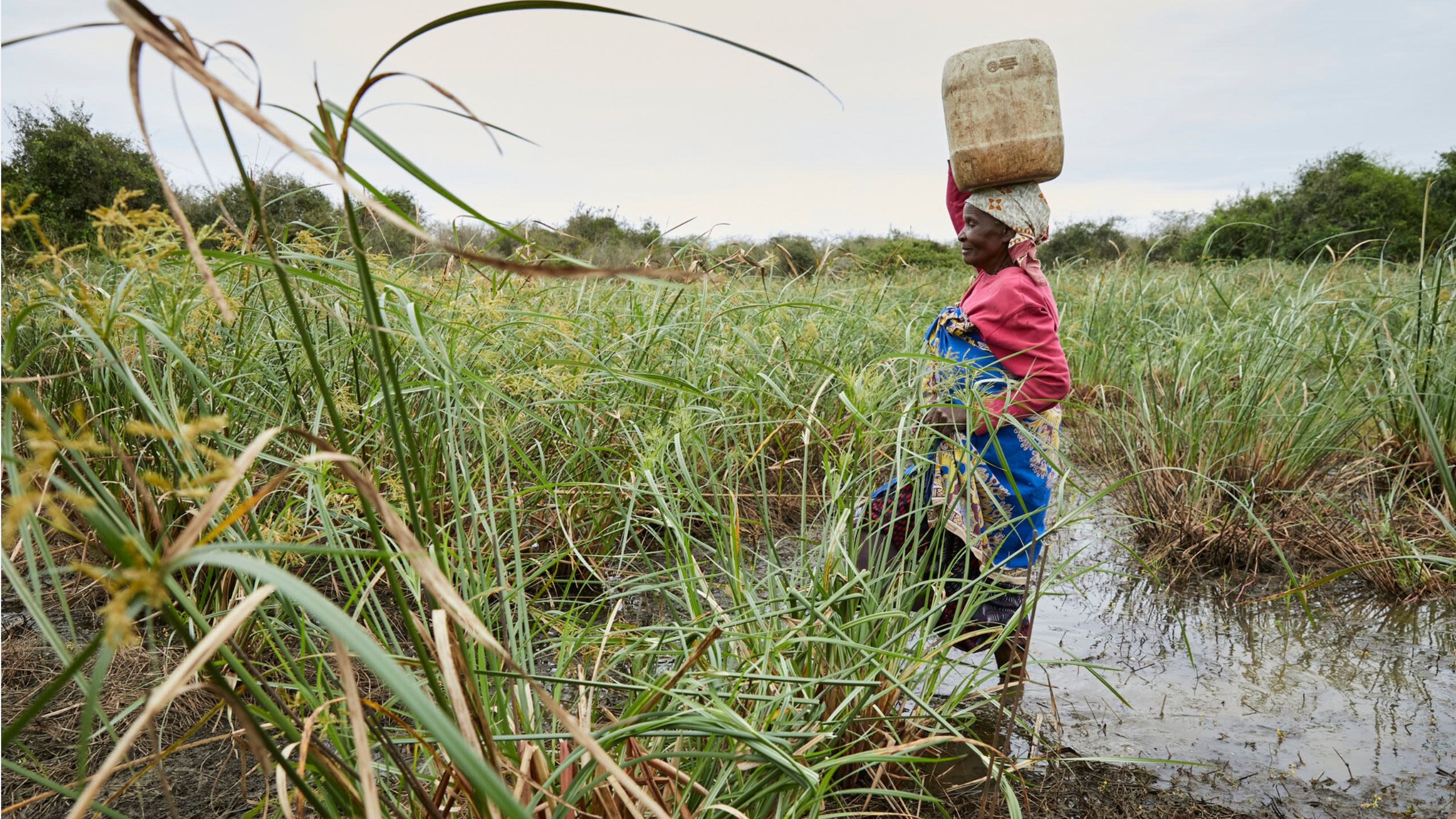The Devastating Effects Of Climate Whiplash On Cities Around The World

Table of Contents
Increased Frequency and Intensity of Extreme Weather Events
Climate whiplash intensifies the challenges faced by cities, exacerbating existing vulnerabilities and creating new ones. The rapid transitions between extremes place immense stress on urban infrastructure and populations.
Heat Waves and Urban Heat Islands
The urban heat island effect, where cities are significantly warmer than surrounding areas, is amplified by climate whiplash. Prolonged heatwaves, often following periods of drought, lead to a surge in heat-related illnesses and mortality.
- Examples: Cities like Phoenix, Arizona, and Ahmedabad, India, regularly experience extreme heat waves, resulting in numerous heat-related deaths.
- Statistics: The World Health Organization reports a substantial increase in heat-related mortality globally, with urban areas bearing the brunt of the impact.
- Mitigation Strategies: Implementing green infrastructure, such as urban parks and green roofs, along with utilizing cool pavements and reflective building materials, can significantly mitigate the urban heat island effect and improve heatwave preparedness.
Flash Floods and Stormwater Overwhelm
The rapid shift from drought to intense rainfall, a hallmark of climate whiplash, causes devastating flash floods. Existing drainage systems, often inadequate even under normal conditions, are overwhelmed, leading to significant infrastructure damage and widespread disruption.
- Examples: Recent flash floods in cities like Houston, Texas, and Jakarta, Indonesia, have demonstrated the vulnerability of urban areas to extreme rainfall events.
- Infrastructure Vulnerabilities: Aging drainage systems, inadequate stormwater management, and impermeable surfaces contribute to the severity of flash floods.
- Improved Drainage and Flood Management: Investing in green infrastructure solutions like permeable pavements, bioswales, and improved drainage networks is crucial for enhancing urban resilience to flash flooding.
Droughts and Water Scarcity
Climate whiplash can also lead to prolonged droughts, impacting water supplies and increasing the risk of wildfires in and around urban areas. Water scarcity affects all aspects of urban life, from household consumption to industrial processes and agriculture.
- Examples: Cape Town, South Africa, faced severe water restrictions during a recent drought, highlighting the vulnerability of cities to prolonged water shortages.
- Water Conservation and Drought Resilience: Implementing water-efficient technologies, promoting water conservation practices, and investing in water storage and reuse systems are critical for building drought resilience.
- Impact on Agriculture and Food Security: Droughts can significantly disrupt agricultural production, impacting food security and increasing food prices in urban areas.
The Economic and Social Impacts of Climate Whiplash on Cities
The consequences of climate whiplash extend far beyond immediate infrastructure damage. The economic and social costs are substantial and long-lasting.
Economic Losses from Infrastructure Damage
Repairing damaged infrastructure after extreme weather events places a massive economic burden on cities. The costs can be staggering, impacting budgets and hindering future development.
- Statistics: The costs of repairing roads, bridges, and other critical infrastructure after extreme weather events run into billions of dollars annually globally.
- Economic Disruption: Business closures, supply chain disruptions, and loss of tourism revenue exacerbate the economic fallout.
- Insurance Implications: The increasing frequency and severity of extreme weather events are pushing up insurance premiums and creating challenges for the insurance industry.
Social Disruptions and Displacement
Climate whiplash disproportionately impacts vulnerable populations, leading to displacement, social unrest, and exacerbating existing inequalities.
- Examples: Low-income communities and marginalized groups often lack the resources to adapt to or recover from extreme weather events.
- Social Equity and Climate Justice: Addressing climate change requires a commitment to social equity and climate justice, ensuring that the most vulnerable are protected.
- Strategies for Community Resilience: Empowering communities, investing in social safety nets, and improving early warning systems are crucial for building social resilience.
Building Urban Resilience to Climate Whiplash
Creating resilient cities requires a multifaceted approach involving sustainable planning, climate-resilient infrastructure, and community engagement.
Implementing Sustainable City Planning Strategies
Sustainable city planning is paramount in mitigating the effects of climate whiplash. This involves integrating green infrastructure, enhancing drainage systems, and improving early warning systems.
- Green Infrastructure: Incorporating green spaces, green roofs, and permeable pavements helps manage stormwater runoff and reduce the urban heat island effect.
- Improved Drainage Systems: Investing in robust and adaptable drainage systems is critical for mitigating the risks of flash flooding.
- Early Warning Systems: Effective early warning systems are crucial for enabling timely evacuation and reducing the impact of extreme weather events.
- Resilient Building Codes: Implementing updated building codes that incorporate climate resilience principles ensures the safety and longevity of structures.
- Community Engagement: Engaging communities in the planning process is vital for developing effective and equitable adaptation strategies.
Investing in Climate-Resilient Infrastructure
Investing in climate-resilient infrastructure is crucial for protecting cities from the impacts of climate whiplash. This requires a shift from traditional infrastructure design to approaches that anticipate and withstand extreme weather events.
- Examples: Building elevated roads and railways, using flood-resistant materials, and implementing advanced water management systems.
- Funding Mechanisms: Securing funding for climate-resilient infrastructure requires collaboration between governments, the private sector, and international organizations.
- Technological Advancements: Leveraging technological innovations, such as smart sensors and data analytics, can improve the efficiency and effectiveness of infrastructure management.
Conclusion
The devastating effects of climate whiplash on cities are undeniable. From the economic losses incurred through infrastructure damage to the social disruptions and displacement of vulnerable populations, the challenges are significant and interconnected. Building urban resilience requires a comprehensive and integrated approach that encompasses sustainable city planning, investment in climate-resilient infrastructure, and a commitment to social equity. Understanding the devastating effects of climate whiplash is crucial for building a more resilient future. Learn more about climate adaptation strategies and take action today to protect your city. Visit your local government's website and explore resources from organizations like the UN Environment Programme and the World Resources Institute to learn more about how you can contribute to creating sustainable, resilient urban environments.

Featured Posts
-
 Teylr Suift Khyu Dzhakman I Skandalt Nova Informatsiya Za Bleyk Layvli I Dzhstin Baldoni
May 28, 2025
Teylr Suift Khyu Dzhakman I Skandalt Nova Informatsiya Za Bleyk Layvli I Dzhstin Baldoni
May 28, 2025 -
 Serena Williams Double Standards In Tennis Doping Cases The Jannik Sinner Controversy
May 28, 2025
Serena Williams Double Standards In Tennis Doping Cases The Jannik Sinner Controversy
May 28, 2025 -
 The Newark Airport Crisis Why It Matters To Everyone
May 28, 2025
The Newark Airport Crisis Why It Matters To Everyone
May 28, 2025 -
 Late Inning Heroics Stowers Grand Slam Secures Marlins Win
May 28, 2025
Late Inning Heroics Stowers Grand Slam Secures Marlins Win
May 28, 2025 -
 Google Veo 3 A Practical Review Of Ai Video Creation
May 28, 2025
Google Veo 3 A Practical Review Of Ai Video Creation
May 28, 2025
